This is the first of two posts discussing cabinet construction. Next month we will look at framed cabinetry. This month we look at the pros and cons of frameless cabinetry.
The Kitchen Cabinet Manufacturers Association (KCMA) member data reveals frameless cabinetry is the fasting growing cabinet category. A small percentage of cabinet sales 10 years ago, frameless today accounts for 25% of KCMA manufacturers’ revenues.
All indications are that frameless will continue to take market share from framed cabinetry. Here are the six primary drivers for frameless growth:
- Optimized Storage Space
- Design Flexibility
- Easier, More Thorough Cleaning
- Easier Accessibility & Visibility
- Efficient Use of Space
- Durability (Pro or con as discussed below)
There are, however, drawbacks to frameless cabinetry too:
- Design Limitations
- Higher Skilled Installers
- Durability (Pro or con as discussed below)
Let’s start with the Pros.
Optimized Storage Space
Frameless cabinets optimize storage space in four ways:
- Larger Cabinet Openings
- More Drawer Space
- Easier Shelf Adjustment
- Open Shelves
We will take a look at each.
Larger Cabinet Openings: Because there is no face frame around the cabinet openings, cabinet openings are 1.5” wider, making it is easier to store dishes and large appliances such as food processors, juicers, or blenders.
Kitchen Storage Basics does a great job demonstrating this. Bray & Scarff Appliance & Kitchen Specialists also have a nice post demonstrating the differences.
More Drawer Space: The larger cabinet opening on frameless means that there is also generally more drawer storage space, even thought cabinets are the same size. The frame is simply not there to get in the way.
Easier Shelf Adjustment: It is also easier to adjust shelves in frameless cabinets since there is no face frame to work around.
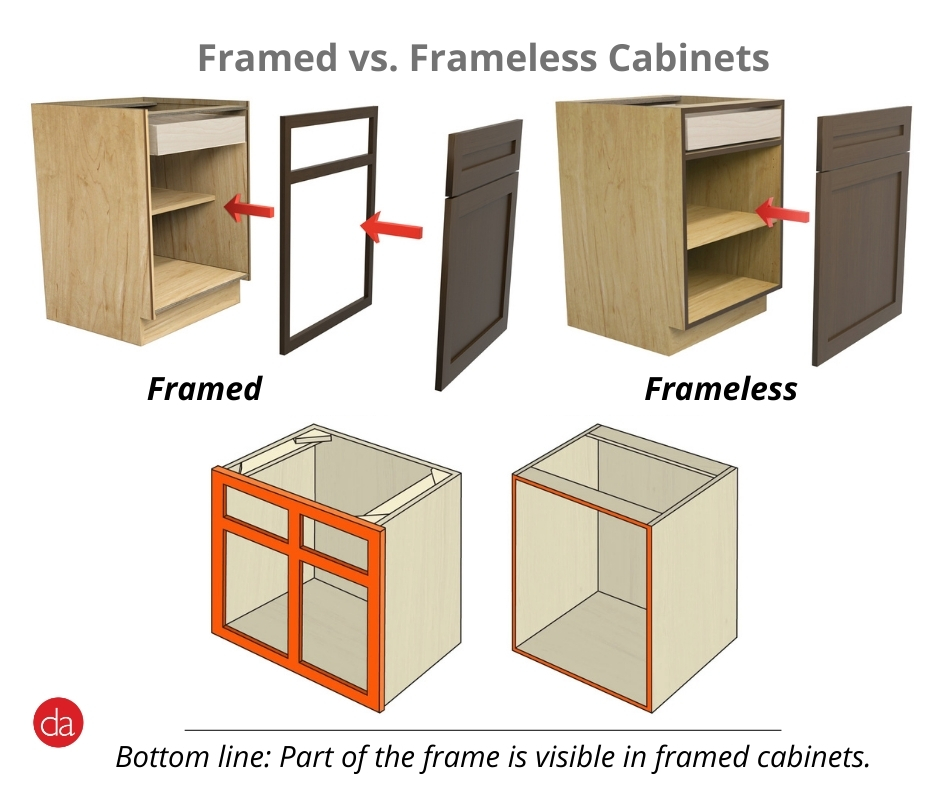
Open Shelves: Since there’s no frame around the cabinet openings, the doors can be left off completely to provide open shelf storage. Ana White does a good job laying this out in her post for a frameless built-in.
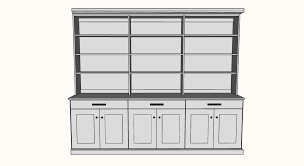
Design Flexibility
Frameless is best known for its sleek, modern, minimalist appearance with smooth lines. A frameless cabinet can, however, be used in traditional and transitional designs as well.
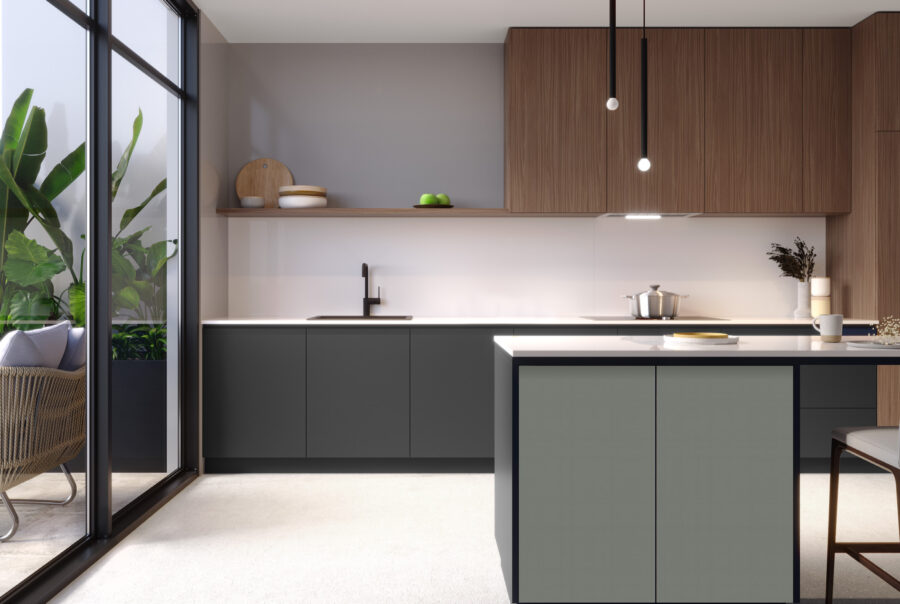
Easier, More Thorough Cleaning
Smooth surfaces and easily removable doors allow for more thorough cleaning with less places for dirt and bacteria to build up. Most finishes in Bishop’s Modern Materials program have anti-bacterial characteristics built into the materials, contributing to a healthier kitchen.
Easier Accessibility & Visibility
Because there is no face frame, putting away dishes is easier, while providing full cabinet visibility.
Dishes do not get hung up on the frames and larger dishes can fit more easily in the same size cabinet as a traditional framed cabinet.

Efficient Use of Space
For small kitchens, frameless cabinets are generally preferred over framed cabinets because they maximize storage space by eliminating the face frame, which takes up valuable interior space. This difference in interior space can be as much as 15% in favor of frameless cabinets.
Durability
Some cabinet manufacturers build cabinets with 5/8″ box ends and 1/4″ backs. In those cases, durability can be an issue, although not always.
At Bishop the box ends made of solid 3/4” plywood or engineered wood and 1/2″ backs. The construction is able withstand heavy use. All Bishop cabinets are rigorously and independently tested and certified by the Kitchen Cabinet Manufacturers Association (KCMA).
While frameless cabinets have many advantages, there are also potential drawbacks.
- Design Limitations
- Installation
- Durability (In some cases)
Design Limitations
Certain cabinets are not available or challenging in frameless, such as angle and offset cabinets. Angle doors on frameless often don’t look good, especially on white finishes due to shadowing where the door meets the side of the cabinet box.
Frameless is desired for its tight lines and sleek look. This makes traditional designs more challenging. While frameless cabinetry can be designed with traditional or transitional doors, it is a bit more challenging to create a truly traditional cabinet look.
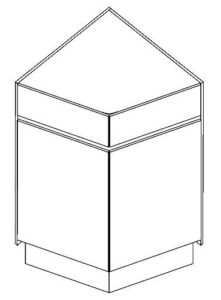
Angle Cabinet
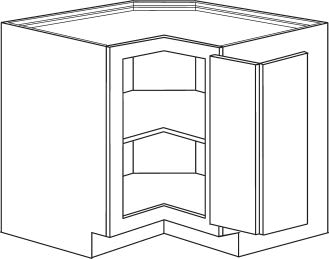
Offset Cabinet
Higher Skilled Installers
Frameless cabinets have very tight tolerances. Installed correctly this sleek look with perfect lines is one reason why frameless has been growing. However, there is no frame to hide sloppy workmanship by the installer or the manufacturer. The cabinets have to be level and perfectly aligned.
Durability
As mentioned above, durability can be an issue. This is more of an issue is the cabinet box that are using 1/2″ or 5/8″ material on the cabinet box sides. It is always best to go with a frameless cabinet manufacture that uses 3/4″ material on the cabinet sides and ideally a 1/2″ back. And, make sure the manufacturers cabinets have been tested and certified by KCMA.
Stay tuned next month when we will review the pros and cons of framed cabinetry.
About Bishop Cabinets
Bishop Cabinets has been manufacturing for over 60 years. Click here to learn more about our capabilities and latest offerings that align with the latest trends in cabinet finishes.
Our Vision Statement
“To create beautiful and functional cabinets through innovation, growth, and a commitment to keep family values at the core of everything we do.”

